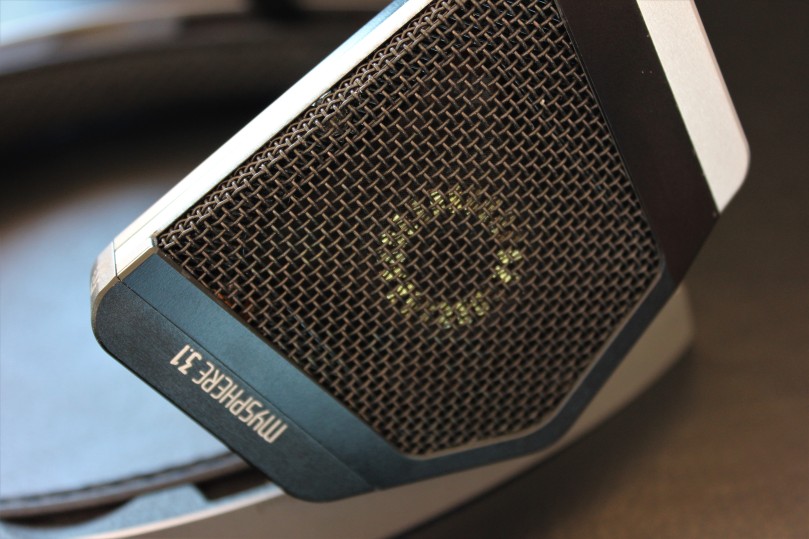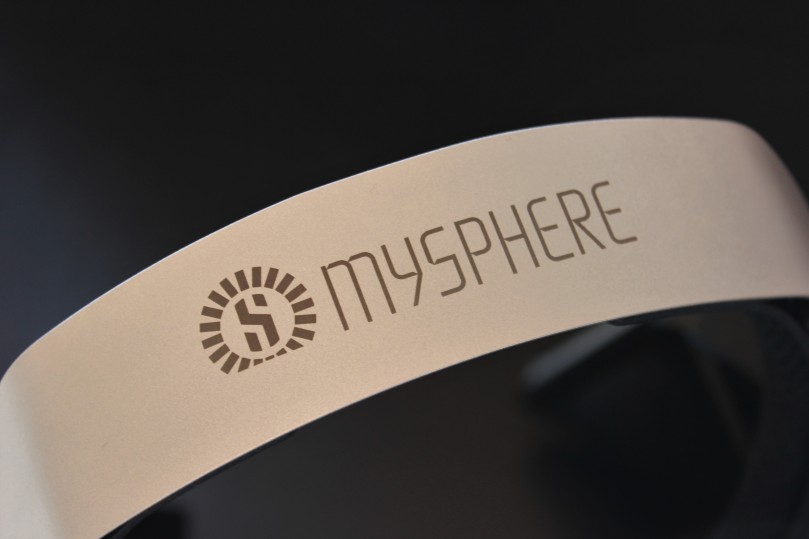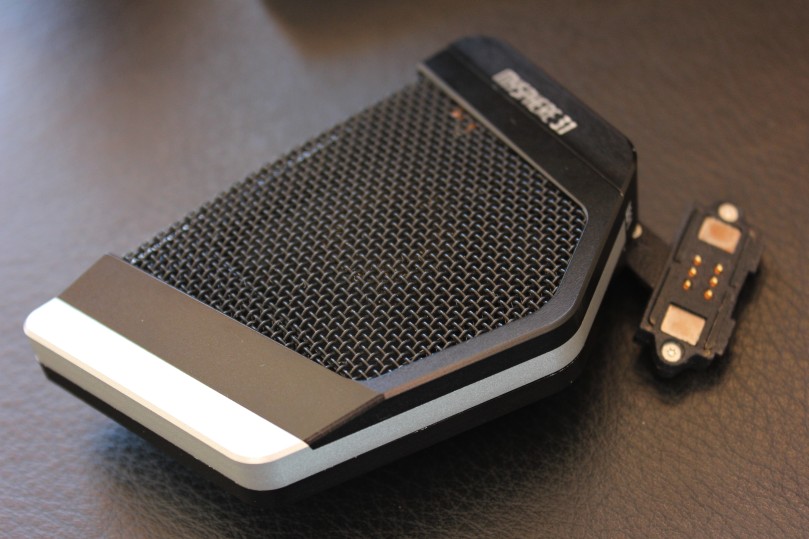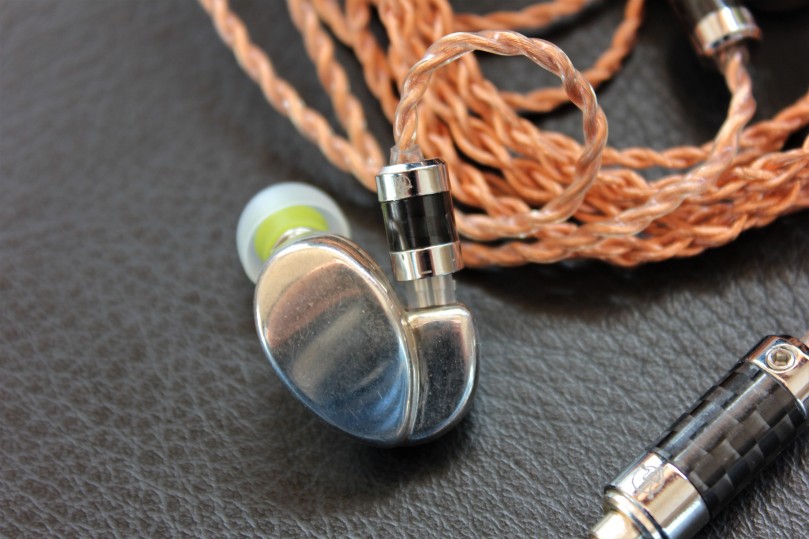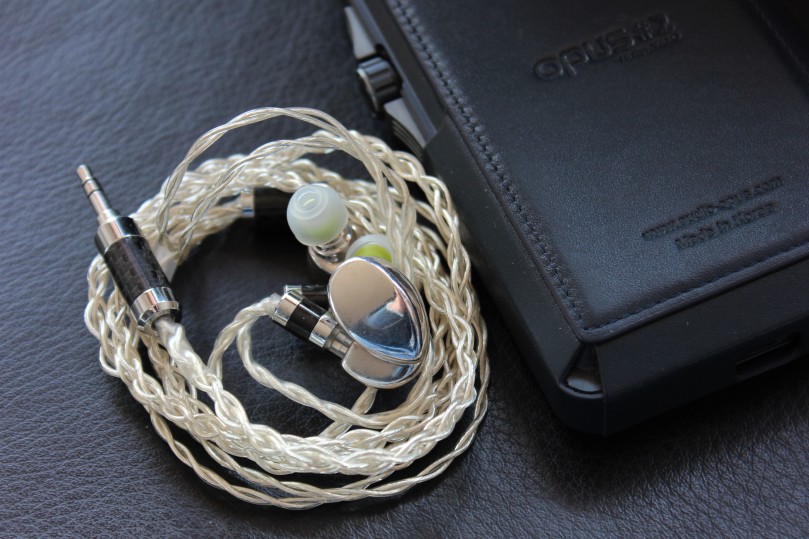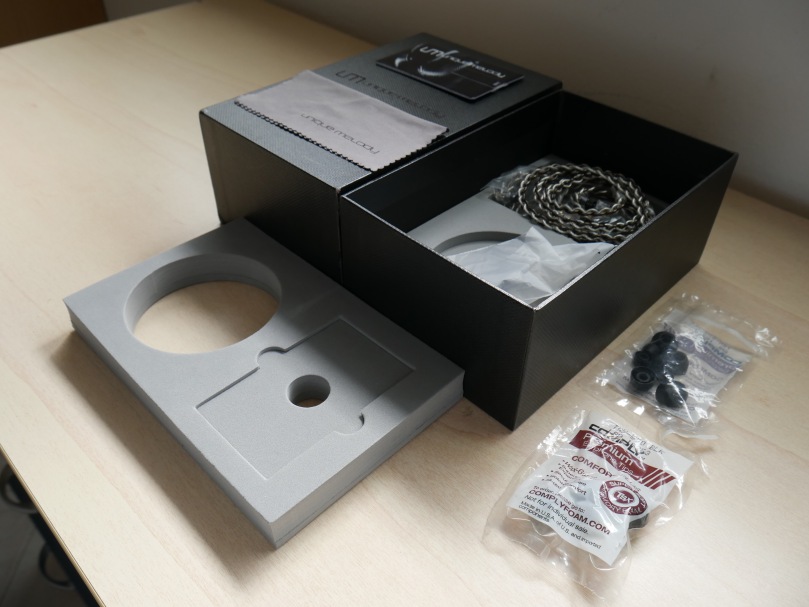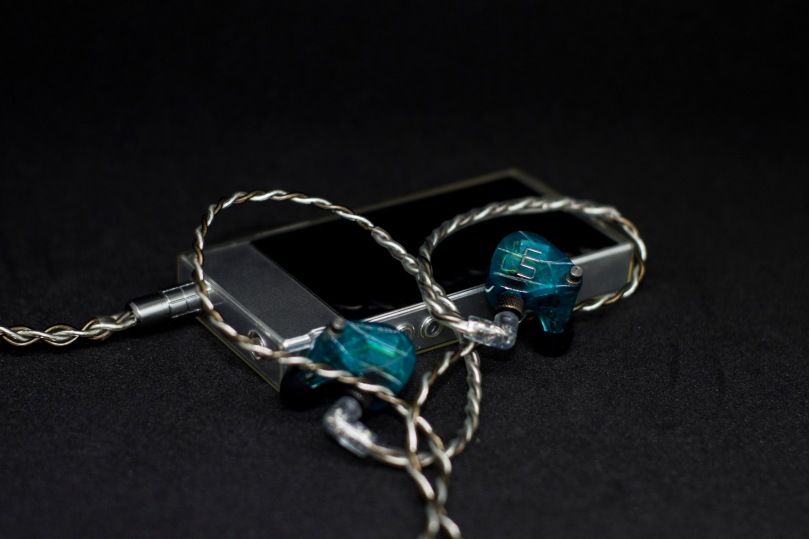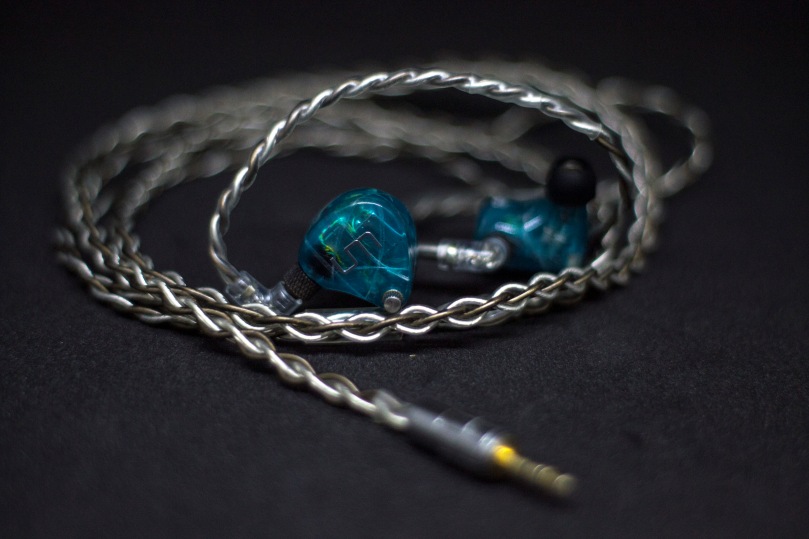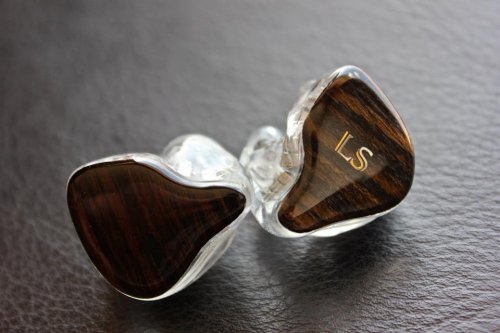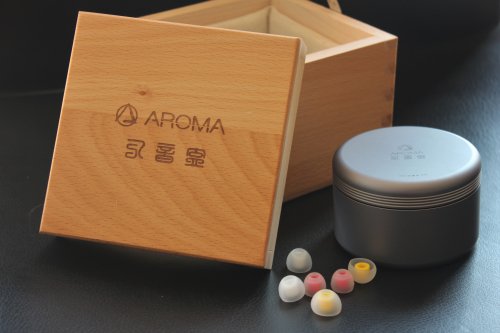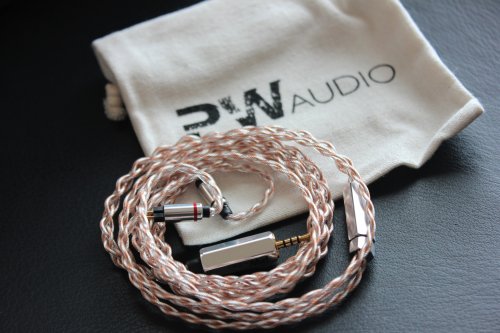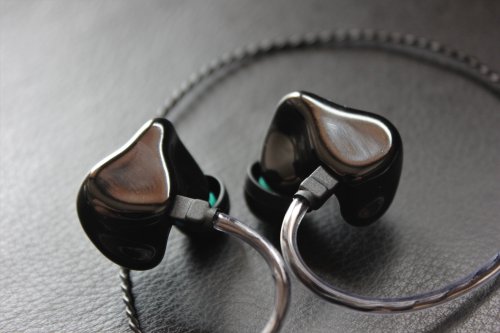Price: 110$
Specifications:
DAC AKM AK4452
Bluetooth version Bluetooth 5.0, support AAC, SBC, aptX
Output power 245mW @ 32 Ohm
Recommended output impedance 16 – 300 Ohm
Supported sampling rate 24bit 192kHz
THD+N 0.008% @ 1kHz
Adjustable gain +3dB / +9dB
Frequency response 10Hz – 100kHz (+/-0.5dB)
Battery capacity 3.7V 1800mAh
Battery life AUX IN: ≥15H Bluetooth input: ≥12H USB IN: ≥8H
USB receiver Support Android mobile phone with OTG function and 192kHz/24bit lossless transmission at most, computer USB input, support with XP, Win7, Win8, Win10 (it is necessary to install driver), MAC system.
Weight 115g


Unboxing
The XDUOO XP-2 comes in a white cardboard external box, which contains another black rigid one. There are a charging/data cable (USB type A to micro-USB), a micro-USB to micro-USB, a micro-USB to USB type C and a jack to jack. And then a manual and a warranty card, and you can also find a soft separator to stack the XP-2 with other devices. I believe you can connect it to an iPhone with a camera adapter which you can buy directly from Apple. I don’t own any Apple mobile devices, so my impressions will concern Android and Mac OS. With Windows, you’d need some drivers.


The product
The XP-2 is a DAC/Amp which works bot wired and wireless, with Bluetooth 5.0. The wired interface is a micro-USB, and there are two of them, one for charging the device and the other for your PC/Smartphone/DAP connection. There are a headphone output and an aux in/out jack, both 3.5mm, both gold-plated. The volume knob is analogic, and it also works as an on/off wheel on the first step. It is a great feature of this DAC, because it’s very well-built and reacts from any small movement you do on it. The build quality is great, with an all-metal body and just a plastic insert for the Bluetooth receiver. Spoiler: the antenna is not bad! On a side, there’s a Bluetooth link button (which however is not so essential because when you power up the XP-2, it automatically searches for the last device connected). There’s also a gain switch, with low and high. For my IEMs, even the low gain mode provides a lot of power. The last button is a “Select” one, to switch between modes. I find this device to be very intuitive, much more than the iFi xDSD. There’s a LED which helps you to understand which mode you are using:
Pairings
I’ve used the XDUOO XP-2 in every possible way. I’ll list the sources and the various earphones paired.
MacBook Pro 2012 via USB; Xiaomi Mi MIX 2 via USB and Bluetooth; Dodocool DA106 via Aux; FiiO M7 via AUX and Bluetooth (the M7 is not compatible with the XP-2 via USB, exactly like it wasn’t with the Audirect Beam; instead, with the iFi xDSD it perfectly works).
IEMs: BGVP DM6 and DMG, FiiO FA1, Tin HiFi T2 and T3, ADVANCED M4.
Headphones: Sennheiser Momentum On Ear, 1MORE MK801.
Earbuds: 1MORE Piston, **** BK2.

Sound, features, comparisons
Let’s start saying the sound is great. Not only this device can provide a lot of power, but its signal is also really clean and noiseless. Comparing it to the iFi xDSD (which costs more than 3 times more), I find the XDUOO to provide a much more neutral sound. You can easily understand the xDSD is a bass-oriented multi-functional DAC, but I was surprised to hear how much the XP-2 was cleaner and brighter in its reproduction. That being said, the bass provided by the XP-2 is still great and more forward than average. The soundstage is average, but it depends a lot on the earphones in use; the xDSD offers more 360° impressions, width and especially depth. But I don’t feel the need to have something better here: a wide sounding IEM (like the ADVANCED M4) is perfect paired with it. It’s difficult to talk about a DAC speaking about its sound characteristics, because the final result is filtered by the earphones’ signatures; however, I can say that vocals on the XP-2 are always airy and bodied, I love the midrange and I’m not bothered by the slight sharpness on the treble. The instrument separation is very good: it can improve my **** Topaz (very natural sounding earphones with great dynamic, a nice match with it) in difficult tracks with dense mixes (like some Bloody Beetroots’ stuff). The isolation from noises is exceptional: I honestly didn’t think a mobile DAP could outperform that way my dedicated audio interface or the xDSD itself, without any signal purifier. I believe this DAC is very well-engineered. This falls in the same price range as the Audirect Beam, which however has not the same features (no Bluetooth, no Aux, no analogical volume controls…) but I think it could be a fair comparison. I did like the Beam, even though it lacked power sometimes and it got hot very easily; the sound was neutral but with a touch of darkness. The XP-2, for me, is a product of another category. Its performance for price ratio is fenomenal: all my IEMs can be very easily driven in low gain, with the knob at a maximum level set at half. Generally, my earbuds require a little bit more power, and my headphones (they are meant to be easily driven anyway) even more; with the headphones (Sennheiser Momentum and 1MORE MK801) I can effectively benefit from switching to high gain.
Wired
USB: So far, speaking of sound quality, the best way to use the XP-2 is via USB. The isolation it provides is amazing (it is not disturbed by electrical noises when attached to my Mac, while the xDSD was pretty unusable, especially when the pc was powered with the charger plugged in). The easiness of switching modes makes it a perfect hybrid between a mobile and a desktop tool. My MacBook Pro doesn’t require any drivers, so it’s a completely plug-and-play DAC both on Android and Mac OS. It unfortunately doesn’t work that way with my FiiO M7, but I can still use the Bluetooth and its line-out to connect them together. The provided cables do their job perfectly well: I’ve tried with my Mac, with my Mi MIX 2 and with my first Moto G, as (not only) TIDAL sources, and every one of them was good. So, via USB I’d define the XP-2 as fairly versatile.
Aux: this obviously depends a lot on the power of your source. I generally found the volume being lower via Aux, especially with the Dodocool DA106: it’s better to use the high gain feature on this mode. The provided Aux cable has the right length, so you are not disturbed when you stack items. This is the mode I’ve used the least, but it’s functional and very good if you are a stack person.
Wireless
The most versatile mode of the XP-2 is Bluetooth. Thanks to an amazing battery life (with IEMs, on low gain, I easily can use it for 10 hours straight!) and a stable signal even on a long range, it connects via Qualcomm aptX to my FiiO M7 and Xiaomi Mi MIX 2 and it becomes a great tool to carry around without the need to have poor-battery Bluetooth earphones: every earphone can be turned into a wireless one, with the advantage of a long-lasting battery and a fantastic sound quality. I was skeptical about the wireless quality, but aptX is good enough and if you have good files in your source (FLACs, Master TIDAL quality, but even good MP3s) you may not feel the need to have a better instrument. I personally don’t: this is a fantastic multi-functional DAC/Amp. The wireless mode maintains the quality of the tuning of the wired modes, and it adds various comforts.
Best pairings and conclusions
I came to this conclusion: the best earphones to use with the XDUOO XP-2 are the bassier ones. Headphones like the Momentum, or in ear monitors like the DM6, which provide a lot of bass but need a brighter source, match perfectly with the XP-2. I’d rather it than the xDSD paired with those earphones. The xDSD is preferable when it comes to drive reference tuned earphones while wanting a touch of fun. (I’m comparing these two, even though they are from different categories, because at this moment I have the possibility of A-B test them)
What I can say about this device in the end: it’s one of the best products I have ever tried. Its versatility and nearly universal compatibility make it a game changer for its price range. It can be the DAP of your only-digital source, it can be your endless-lasting Bluetooth receiver, it can be your PC audio card! In every iteration, it is an amazing performer. This is a solid product (not only for its great build quality) and I can’t but recommend it, especially for its price range.
Pros
Cons
Specifications:
DAC AKM AK4452
Bluetooth version Bluetooth 5.0, support AAC, SBC, aptX
Output power 245mW @ 32 Ohm
Recommended output impedance 16 – 300 Ohm
Supported sampling rate 24bit 192kHz
THD+N 0.008% @ 1kHz
Adjustable gain +3dB / +9dB
Frequency response 10Hz – 100kHz (+/-0.5dB)
Battery capacity 3.7V 1800mAh
Battery life AUX IN: ≥15H Bluetooth input: ≥12H USB IN: ≥8H
USB receiver Support Android mobile phone with OTG function and 192kHz/24bit lossless transmission at most, computer USB input, support with XP, Win7, Win8, Win10 (it is necessary to install driver), MAC system.
Weight 115g


Unboxing
The XDUOO XP-2 comes in a white cardboard external box, which contains another black rigid one. There are a charging/data cable (USB type A to micro-USB), a micro-USB to micro-USB, a micro-USB to USB type C and a jack to jack. And then a manual and a warranty card, and you can also find a soft separator to stack the XP-2 with other devices. I believe you can connect it to an iPhone with a camera adapter which you can buy directly from Apple. I don’t own any Apple mobile devices, so my impressions will concern Android and Mac OS. With Windows, you’d need some drivers.


The product
The XP-2 is a DAC/Amp which works bot wired and wireless, with Bluetooth 5.0. The wired interface is a micro-USB, and there are two of them, one for charging the device and the other for your PC/Smartphone/DAP connection. There are a headphone output and an aux in/out jack, both 3.5mm, both gold-plated. The volume knob is analogic, and it also works as an on/off wheel on the first step. It is a great feature of this DAC, because it’s very well-built and reacts from any small movement you do on it. The build quality is great, with an all-metal body and just a plastic insert for the Bluetooth receiver. Spoiler: the antenna is not bad! On a side, there’s a Bluetooth link button (which however is not so essential because when you power up the XP-2, it automatically searches for the last device connected). There’s also a gain switch, with low and high. For my IEMs, even the low gain mode provides a lot of power. The last button is a “Select” one, to switch between modes. I find this device to be very intuitive, much more than the iFi xDSD. There’s a LED which helps you to understand which mode you are using:
- Green: Bluetooth (but while pairing it’s blue, I believe; I’m colorblind);
- Red: USB;
- Both: Aux.
Pairings
I’ve used the XDUOO XP-2 in every possible way. I’ll list the sources and the various earphones paired.
MacBook Pro 2012 via USB; Xiaomi Mi MIX 2 via USB and Bluetooth; Dodocool DA106 via Aux; FiiO M7 via AUX and Bluetooth (the M7 is not compatible with the XP-2 via USB, exactly like it wasn’t with the Audirect Beam; instead, with the iFi xDSD it perfectly works).
IEMs: BGVP DM6 and DMG, FiiO FA1, Tin HiFi T2 and T3, ADVANCED M4.
Headphones: Sennheiser Momentum On Ear, 1MORE MK801.
Earbuds: 1MORE Piston, **** BK2.

Sound, features, comparisons
Let’s start saying the sound is great. Not only this device can provide a lot of power, but its signal is also really clean and noiseless. Comparing it to the iFi xDSD (which costs more than 3 times more), I find the XDUOO to provide a much more neutral sound. You can easily understand the xDSD is a bass-oriented multi-functional DAC, but I was surprised to hear how much the XP-2 was cleaner and brighter in its reproduction. That being said, the bass provided by the XP-2 is still great and more forward than average. The soundstage is average, but it depends a lot on the earphones in use; the xDSD offers more 360° impressions, width and especially depth. But I don’t feel the need to have something better here: a wide sounding IEM (like the ADVANCED M4) is perfect paired with it. It’s difficult to talk about a DAC speaking about its sound characteristics, because the final result is filtered by the earphones’ signatures; however, I can say that vocals on the XP-2 are always airy and bodied, I love the midrange and I’m not bothered by the slight sharpness on the treble. The instrument separation is very good: it can improve my **** Topaz (very natural sounding earphones with great dynamic, a nice match with it) in difficult tracks with dense mixes (like some Bloody Beetroots’ stuff). The isolation from noises is exceptional: I honestly didn’t think a mobile DAP could outperform that way my dedicated audio interface or the xDSD itself, without any signal purifier. I believe this DAC is very well-engineered. This falls in the same price range as the Audirect Beam, which however has not the same features (no Bluetooth, no Aux, no analogical volume controls…) but I think it could be a fair comparison. I did like the Beam, even though it lacked power sometimes and it got hot very easily; the sound was neutral but with a touch of darkness. The XP-2, for me, is a product of another category. Its performance for price ratio is fenomenal: all my IEMs can be very easily driven in low gain, with the knob at a maximum level set at half. Generally, my earbuds require a little bit more power, and my headphones (they are meant to be easily driven anyway) even more; with the headphones (Sennheiser Momentum and 1MORE MK801) I can effectively benefit from switching to high gain.
Wired
USB: So far, speaking of sound quality, the best way to use the XP-2 is via USB. The isolation it provides is amazing (it is not disturbed by electrical noises when attached to my Mac, while the xDSD was pretty unusable, especially when the pc was powered with the charger plugged in). The easiness of switching modes makes it a perfect hybrid between a mobile and a desktop tool. My MacBook Pro doesn’t require any drivers, so it’s a completely plug-and-play DAC both on Android and Mac OS. It unfortunately doesn’t work that way with my FiiO M7, but I can still use the Bluetooth and its line-out to connect them together. The provided cables do their job perfectly well: I’ve tried with my Mac, with my Mi MIX 2 and with my first Moto G, as (not only) TIDAL sources, and every one of them was good. So, via USB I’d define the XP-2 as fairly versatile.
Aux: this obviously depends a lot on the power of your source. I generally found the volume being lower via Aux, especially with the Dodocool DA106: it’s better to use the high gain feature on this mode. The provided Aux cable has the right length, so you are not disturbed when you stack items. This is the mode I’ve used the least, but it’s functional and very good if you are a stack person.
Wireless
The most versatile mode of the XP-2 is Bluetooth. Thanks to an amazing battery life (with IEMs, on low gain, I easily can use it for 10 hours straight!) and a stable signal even on a long range, it connects via Qualcomm aptX to my FiiO M7 and Xiaomi Mi MIX 2 and it becomes a great tool to carry around without the need to have poor-battery Bluetooth earphones: every earphone can be turned into a wireless one, with the advantage of a long-lasting battery and a fantastic sound quality. I was skeptical about the wireless quality, but aptX is good enough and if you have good files in your source (FLACs, Master TIDAL quality, but even good MP3s) you may not feel the need to have a better instrument. I personally don’t: this is a fantastic multi-functional DAC/Amp. The wireless mode maintains the quality of the tuning of the wired modes, and it adds various comforts.
Best pairings and conclusions
I came to this conclusion: the best earphones to use with the XDUOO XP-2 are the bassier ones. Headphones like the Momentum, or in ear monitors like the DM6, which provide a lot of bass but need a brighter source, match perfectly with the XP-2. I’d rather it than the xDSD paired with those earphones. The xDSD is preferable when it comes to drive reference tuned earphones while wanting a touch of fun. (I’m comparing these two, even though they are from different categories, because at this moment I have the possibility of A-B test them)
What I can say about this device in the end: it’s one of the best products I have ever tried. Its versatility and nearly universal compatibility make it a game changer for its price range. It can be the DAP of your only-digital source, it can be your endless-lasting Bluetooth receiver, it can be your PC audio card! In every iteration, it is an amazing performer. This is a solid product (not only for its great build quality) and I can’t but recommend it, especially for its price range.
Pros
- Build quality
- Battery life
- Noise isolation
- It provides a lot of power
- Clean sound
- Intuitive
- Solid wireless connection
- Price
Cons
- No USB C




















